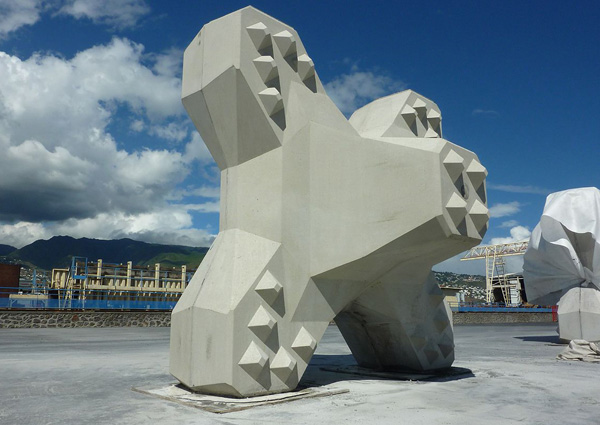
Introduction
Breakwaters play a critical role in protecting coastal structures and ensuring the safety of ports and harbors. Ensuring their stability is paramount, as any failure can lead to costly repairs, operational disruptions, and potential hazards. Correct block placement is a fundamental aspect of breakwater stability, governed by various factors such as contact, orientation, and density. Teledyne’s SeaBat T51 and SEABIM® software have joined forces to offer a comprehensive solution in pursuit of accurate and efficient block placement analysis.
The Problem
The primary challenge lies in precisely placing concrete blocks within the breakwater. Incorrect placement can compromise stability, leading to block movement, interlocking issues, and structural damage. Traditionally, diver-assisted surveys have been used for analysis, but these pose risks to human safety, lack reliability, and may not provide the necessary parameters for accurate assessments. Furthermore, identifying incorrect placement early in construction is crucial to prevent expensive rework.
Why SeaBat?
Data quality is paramount for accurate block placement analysis. Teledyne’s SeaBat T51 is preferred because it provides high resolution and clean data. The SeaBat T51 stands out with its finest beam widths across the swath, ensuring superior data quality. High-quality data is critical, giving the sharpest point cloud upon which SEABIM’s® analysis is based.
The SEABIM® Solution
SEABIM® is a patented Scan-to-BIM process developed by ID OCEAN, explicitly designed for breakwater analysis. It allows for creating 3D digital twins of the breakwater’s external layer of precast concrete elements. This digital twin offers a fast, detailed, and optimal analysis of the breakwater’s condition during and after construction.
The SEABIM® Process:
Data Collection: On-site measurements include multibeam bathymetry underwater, LiDAR, or UAV photogrammetry above water. This comprehensive data collection process generates a high-density point cloud.
- Block Recognition: SEABIM® matches the point cloud data with its database’s known Concrete Armour Units (CAUs) shapes. This recognition process includes CAUs such as ACCROPODETM I and II, Xbloc®, Core-LocTM, Cubipod, Antifer block, and Tetrapod.
- 3D Digital Twin Creation: SEABIM® quickly constructs a 3D model of the entire concrete armor using shape recognition, computer vision-based algorithms, and AI. This model precisely represents the position and orientation of each concrete block.
- Condition Assessment: The software enables the detection of broken blocks and the evaluation of the quality of interlocking between blocks. Comparing 3D models from different timeframes allows block movement quantification over time.
Benefits of the Collaboration
Teledyne’s SeaBat T51 and SEABIM® software offer a holistic solution for breakwater stability assessment. By leveraging the high-resolution data provided by the SeaBat T51, SEABIM® ensures accurate and detailed analysis of block placement, interlocking quality, and block condition. This synergy enables preventive maintenance operations to be planned efficiently, reduces the risk of structural failures, and minimizes costly rework during construction.
In conclusion, the partnership between Teledyne’s SeaBat T51 and SEABIM® software represents a cutting-edge approach to addressing the challenges of breakwater stability assessment. This collaborative solution sets a new standard for accuracy, efficiency, and safety in coastal structure management. It reinforces the importance of technological innovation in marine engineering and construction.
